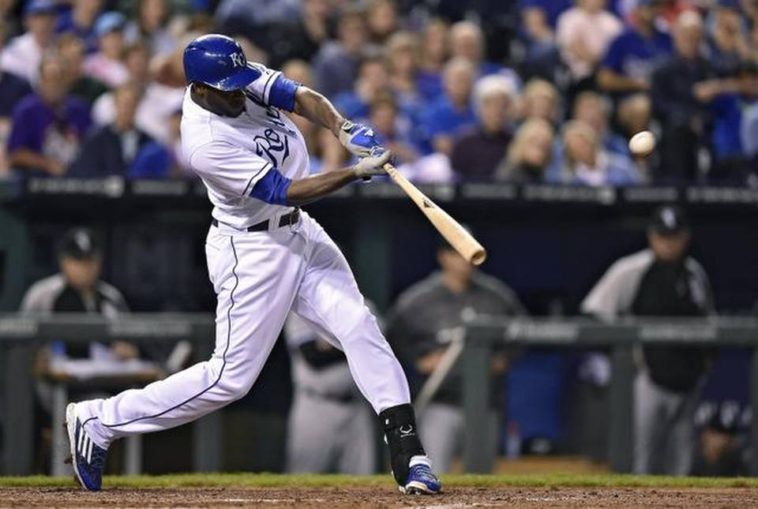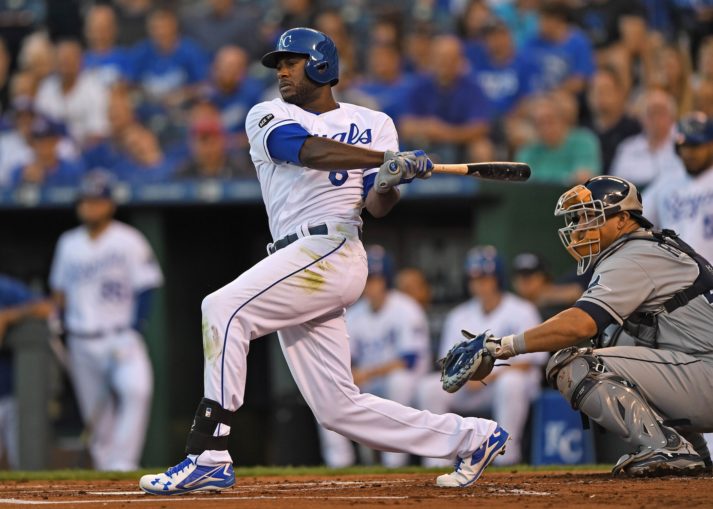
Coming into the offseason, the Mets had a need to acquire an outfielder with only four of them on the entire 40-man roster.
They filled that need a few weeks ago after signing Jay Bruce to a three-year, $39 million contract.
The 30-year old hit .254/.324/.508 last season with 36 home runs and 101 RBIs to give him a 118 wRC+ last season. He also had six defensive runs saved playing right field last season while finishing with zero in a limited 91 inning sample size at first base. All of this combined to give him a 2.7 WAR.
His addition to the team, while clearly benefiting the team in the power department, has managed to cloud some other aspects of the roster going into the 2018 season.
Bruce’s signing has now forced the Mets to abandon their plan to let Juan Lagares and Brandon Nimmo share time in center field while also forcing Michael Conforto to play center field upon his return from the disabled list in early May.
Conforto graded out at -4 defensive runs saved in center field while recording one defensive run saved in both left field and right field.
So all this begs the question of whether or not Jay Bruce is a good fit for the team in 2018 and further points to another discussion.
With all of these concerns, why did the Mets not just sign a natural center fielder such as Lorenzo Cain?
Cain signed three nights ago with the Milwaukee Brewers on a five-year, $80 million contract to return to the place where it all began for him.
He was famously a major piece in the Zack Greinke trade between the Kansas City Royals and the Brewers in 2011. Cain went on to become a key player in Kansas City as well as a World Series champion.
The one-time All-Star has hit .290/.342/.421 with a 107 wRC+ in his career so far. He is also an elite defender as he has 92 defensive runs saved in the outfield, largely spent in center field.
The 31-year old had one of his best seasons to date in 2017 as he hit .300/.363/.440 with 15 home runs, 49 RBIs, and 26 stolen bases to give him a 115 wRC+ Defensively, he also accumulated five defensive runs saved. All of this combined to give him a 5.3 WAR on the season.
That last number had him ranked eighth among all outfielders in baseball in the category, thereby cementing him among the elite at the position currently.
So to actually get delve into the Bruce vs. Cain debate, a few different topics need to be dissected.

Offensive Fit
In terms of the lineup, Bruce and Cain both offer skillsets that could be useful for the team. Bruce provides the Mets with a power hitter that is much needed after trading away many of the team’s veteran sluggers at the trade deadline last season.
However, Bruce struggles to find ways to get on base otherwise with a career OBP of .319, which is less than satisfactory to say the least.
Cain provides a different skillset. He is a true lead-off hitter that can steal bases and limits his strikeouts fairly well. He has only struck out 100 times or higher twice in his career so far, which is impressive in an era where we are seeing more strikeouts and home runs than ever before.
Ever since the first time Jose Reyes was in orange-and-blue, the Mets have struggled to find someone that could fit into this role properly and have been forced to move middle-of-the-order hitters such as Curtis Granderson and Michael Conforto into that spot.
Unless the Mets add a true lead-off hitter at second or third base, Juan Lagares will likely have to lead-off until Michael Conforto returns to reclaim that spot in the lineup.
The second area is where he lacks success in, though, as his career-high in home runs is 16. However, the Mets ranked second in the National League and eighth in all of baseball in that category in 2017, so it certainly could be argued that it is not really an area the Mets needed to address.
Defensive Fit
This one completely shifts the discussion. Lorenzo Cain is a much better fit for the team in this category.
The addition of Bruce forces the Mets, as previously mentioned, to play Conforto in center field next season which just does not set the Mets up well up the middle.
On top of it, while Bruce graded out positively in the outfield in 2017, he had -11 defensive runs saved in right field the year before which could mean the Mets could have a below average defender in not just center field, but right as well.
Cain would have left the Mets with the ability to keep Conforto in right where he grades out more favorably while also adding an above-average defensive center fielder.
For a team that is so heavily reliant on pitching, Cain would have represented a much-needed change to the outfield configuration that has plagued the Mets since the team became aware that Lagares would not be able to hit enough to start in center field in 2015.
However, Bruce does offer them the opportunity to keep Lagares and see if he can win back the center field job in April, while Conforto is sidelined.
Had the team signed Cain, Lagares likely would have been traded as his defensive prowess might have been deemed not as valuable.
Even if the Mets have kept Lagares, he would not be in a position to start on this team once Conforto returns, as none of the outfielders would have been able to play first base.
Jay Bruce can play that position.
So, if Lagares or Nimmo were to able to impress the Mets enough to keep them in the lineup every day, Bruce could move over to first base and the Mets could either release Adrian Gonzalez or demote Dominic Smith depending on what results of that position in April.
If we are just looking at this as a strict fit of the player in the outfield configuration, Cain clearly has the upper hand, though.

Contract
Bruce wins this category easily and its really tough to argue otherwise on this one.
While Cain only received $3 million per year more than Bruce, he received an extra two years as well.
That contract is despite the fact that Cain is 31 already and will turn 32 in April. That means the deal will carry into his age 36 season.
Bruce, meanwhile, turns 32 that same month, but will be a free agent after his age-34 season.
Now, neither contract is necessarily bad by any means. Cain certainly earned the deal he received. Bruce’s deal is a total bargain though, which if the Mets were looking for value, is tough to pass up on if given the chance.
For a guy who hit 36 home runs, $13 million per season is an extremely reasonable price, especially when considering Bruce was looking for a five-year, $90 million contract at the onset of the offseason.
Likelihood of Future Success
So this is where this becomes understandable, at least to me, as to why the Mets would pick Bruce over Cain.
The fact is power does not necessarily decline with age. Many power hitters such as Carlos Beltran and David Ortiz managed to be very successful later in their careers on the offensive side.
Bruce will not even necessarily be too far past his prime (34) at the end of his contract which bodes well for this deal to be successful.
Cain could be a different story. The length of his deal takes him potentially far past his prime. On top of it, his skill-set does not bode well for success towards the back-end of his career.
Defense and speed are not qualities that age well in the game of baseball, or pretty much any sport which means he could be in the midst of his decline within the next few years.
In fact, Cain could soon not be worthy of placing in center field every day, which could completely negate one of his biggest advantage points on Bruce.
Let me be clear. Cain was my first choice at the beginning of the offseason. I was very set on the idea that the Mets needed to pursue him and that he was the answer to many of the Mets questions.
However, after examining it closer and seeing how the market progressed, it makes sense that the Mets chose to pass on him.
If all things were equal here, Cain would have been the way to go in my opinion. They were not equal in this case, though, and that has to be taken into account. Jay Bruce very well might prove to be the better investment.















